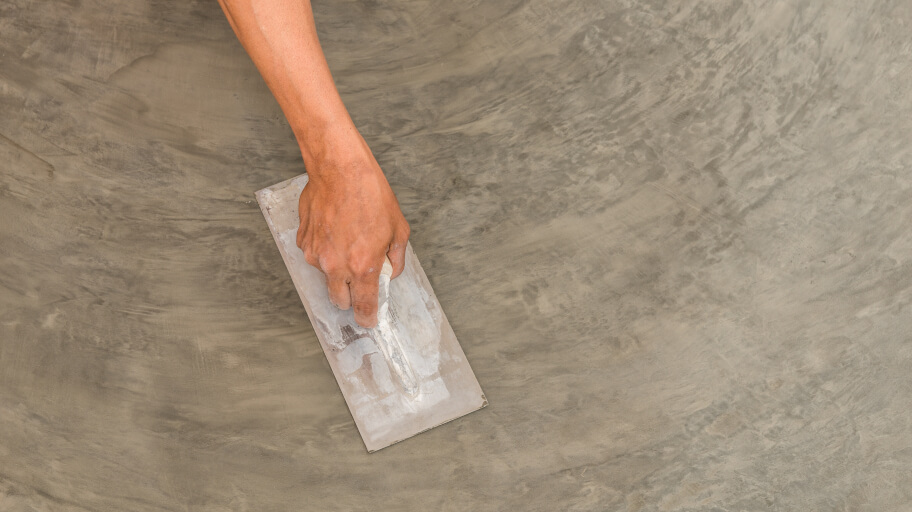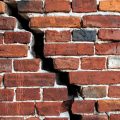
If you are a fan of the minimalist movement, you have probably already thought of getting concrete flooring. Concrete is durable, very easy to maintain and can give an elegant contemporary appearance to any space. Concrete in its plain form has been used for many years as a suitable flooring, mostly for basements, garages, and utility spaces. However, as it is offered today, polished concrete flooring is growing in popularity as decorative flooring in Australia.
If you are considering a new home or office renovation, the idea of installing a polished concrete floor may seem like an appealing one. Even so, an exhausting investigation and planning are needed if you want flawless results that will last for ages. That is why we collected everything there is to know about polished concrete flooring in this post, aiming to help you make an informed and quick decision.
What is polished concrete?
A great invention from the last century is polished concrete flooring that turns dull and raw looking plain concrete flooring into a shiny surface that is smooth and elegant. This result is achieved through a process of mechanically grounding, honing and polishing the floor with abrasive. It could be perceived as somehow similar to sanding wood.
The polished concrete flooring option is popular mainly because of its durability. This makes it ideal for high-traffic areas such as kitchens and hallways, as well as offices and shops. It is also suitable both for indoor and outdoor areas.
If installed properly and taken care of, polished concrete floors can last for decades. Moreover, many colours and finishes could be applied to concrete flooring in order to match any home or office interior.
Polished concrete floors are also easy to maintain. The care they need is frequent dry mopping to eliminate any dust or dirt that might take away the sheen and clarity of the finish. Once a week, the floor can be wet mopped with warm water, too. Every so often, a pH-neutral cleaner can be used but nothing harsh or aggressive. In addition, in order to avoid stains, you will need to make sure to wipe any spills immediately.
Polished concrete flooring – Pros & Cons
When it comes to polished concrete flooring, installation is very important. If not done properly, there is the possibility of cracks appearing. And if there are any cracks in the flooring, water and other liquids will find their way through, causing mildew and bacteria build-up. Also, concrete is not a very comfortable surface. It is hard and cold to walk on, and it could be loud. A solution for some of the polished concrete flooring problems you might face can be to get a cosy rug or carpet. This will take away from the echoing and will make the surfaces warmer and softer to walk on.
As a summary of polished concrete flooring’s benefits and downsides, in this section, we provide you with a list of the key advantages and disadvantages.
Pros
- Durable
- Easy maintenance
- Water-resistant when installed properly
- Versatile designs
- Inexpensive
- Antimicrobial
- VOC (volatile organic compounds) free
Cons
- Cold surface
- Hard underfoot
- Slippery
- Not sound-absorbing
- Cracks could develop over time
- Susceptible to moisture when cracks appear
- Can require occasional resealing
Main polished concrete finishes to explore
There are four main ways in which concrete can be polished – steel trowelled, burnished, honed, and mechanically polished. There are also different levels of stone exposure. Depending on the intensity of grinding and the aggregates used in the concrete mix, very interesting and colourful final designs can be achieved.
Prior to polishing the concrete floor, it is important to discuss the desired final result with the concreter to avoid discrepancies. Specify whether you want trowel marks for a rougher look, what level of sheen you prefer and how much stone exposure you wish for. Further in this post, we cover the specific characteristics of each polishing method, their pros and cons and comments on their durability and affordability, so you better know what to aim for.
- Steel trowelled – Although considered the most basic and affordable polishing finish, this method can still achieve the required sheen appearance when a sealer is applied. This method uses either a hand trowel or power trowel (also called helicopter) to sand the still-wet cement. To avoid damaging the surface and for treating smaller areas, a hand trowel is often used. However, this can leave trowel marks. On the other hand, a power trowel is more convenient for larger spaces and a floor that is free of trowel marks. After that, a non-penetrating sealer will need to be applied. In some years time, the sealer will need to be removed and reapplied.
- Burnished – This type of polishing is achieved through steel trowelling with a machine powered trowel until the surface is free of marks and glossy enough. The extended trowelling, while the concrete is dry, can ‘burn’ the surface, resulting in some areas darkening. The burnished method is a more expensive and time-consuming method, but the results are worth it.
- Honed – Here, the already set concrete is grounded by finer abrasives to achieve higher levels of glossiness. Because of the deeper grinding, a higher level of aggregate exposure can be achieved. In the honed method, a penetrating sealer is used. Moreover, this polishing method makes the concrete extraordinarily durable but also more expensive and labour-intensive.
- Mechanically polished – This method uses diamond-bonded abrasives to grind, hone and polish the concrete. After that, a chemical hardener is applied to make the surface even tougher. This is the hardest and most durable concrete that there is, with a surface that is both shiny and colourful because of the aggregate exposure. It is mostly used for huge commercial projects.
The final look and level of polishing can also depend highly on the type of sealers. Here we will look into the three main types of polished concrete finishes – matte, satin, and high gloss. Which one you choose depends mainly on your personal preferences. Still, some can be more suitable for certain areas and properties in general than others.
- Matte (light-polishing) – For a more natural and hazy look, go for the light-polishing. It won’t show much of the stones, nor much clarity and reflection, but the maintenance is quite easy because dust won’t attract so much attention.
- Satin (mid-polishing) – The satin finish creates a clearer look. However, the reflection is still not very sharp. Satin polished concrete floors are still relatively easy to maintain and, in addition, they hold some sheen that is lacking in the matte option. The mid-polishing is perhaps the most popular choice as it is seen by many as the golden mean.
- High gloss (high-polishing) – Here, sharp mirror-like reflection and clarity are present. It exposes more of the stones in the substrate and creates a shinier, more luxurious and colourful appearance. It is slightly harder to keep the surface spotless all the time since everything shows perfectly. Nonetheless, this choice is preferred by many homeowners because of the stunning results.
How much does polished concrete flooring cost?
In general, getting polished concrete flooring is considered inexpensive. The pricing in Australia can begin from $25 per square meter and go up to $50. For honed concrete, you can expect to pay between $75 per square metre, while for mechanically polished, which is the most expensive, prepare to pay $100 per square metre.
Before deciding on polishing your floor, however, you have to make sure the underlying concrete is actually suitable to be polished. Some concrete floors can be softer than others and due to that, can be damaged with time and use. Those floors will require levelling and repair first. Consider if there are cracks that will need to be sealed or high spots to be sanded. This will play a role in forming the overall cost for the entire job.
Other factors that can influence the cost are:
- The size of your space – Generally, smaller spaces are less expensive, but it also depends on whether there are any specific areas that will require more detailed and precise work. This can slightly increase the price.
- Type of polishing – Steel trowelled, burnished, honed, and mechanically polished can vary in pricing.
- Level of stone exposure – Minimal, medium, and full stone exposure are all beautiful options but be ready to pay more for the more colourful designs.
- Type of finishing sealer used – Matte floors can be cheaper than the satin ones but high gloss is normally the most expensive.
Is polished concrete cheaper than tiles?
When looking for the answer to whether polished concrete is more affordable or tiles, it really depends on the type of flooring you have at the moment. If you already have concrete flooring installed, then you will have to pay only for the polishing, which will cost you approximately $50 per square metre. Tiles prices alone, on the other hand, can range from $35 to $50 per square meter, as natural stone tiles can go over $100. Having the tiles installed will be a separate charge.
However, if you need to pour new concrete flooring, then you need to prepare to pay approximately an overall of $80 per square metre for both the new concrete and the finishing. Keep in mind that concrete flooring requires professional installation. Therefore, you will need to pay a specialist for the job.
However, when it comes to long-lasting results, polished concrete is more sustainable and can last a lifetime. Many decades will have to pass until you feel the need to replace your polished concrete.
Is polished concrete cheaper than floorboards?
Similarly to the pricing comparison with tiles, here it also depends on whether you already have a concrete floor and you simply want to polish it. If the answer is yes, then the cost of steel trowelling your concrete will most likely be lower than that of acquiring floorboards and having them installed by an expert. The approximate price range of wooden floorboards is from $30 to $120 per square metre, as the quality of the wood and whether you are opting for solid hardwood or engineered timber can significantly change the price. Subsequently, the type of installation will also differ both in method and price.
However, with the long lifespan of polished concrete, you can expect to save money on requiring a new floor and repairs, whereas wooden floorboards can be easily damaged and will need to be replaced after a certain period.
Takeaways
- Polished concrete is extremely durable, elegant-looking and a popular flooring choice that comes into various designs.
- There are four main methods of polishing concrete – steel trowelled, burnished, honed, and mechanically polished.
- There are three popular types of concrete sealers – matte, satin, and high gloss.
- The average lifespan cost of polished concrete can be relatively low due to its durability, sustainability and easy maintenance.
Want to get a nice polished concrete floor for your home or bussiness place?
Contact usGet in touch so we can discuss such a project!


